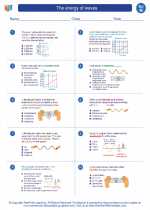Reflection in Science
Reflection is the change in direction of a wavefront at an interface between two different media so that the wavefront returns into the medium from which it originated.
Types of Reflection
There are two main types of reflection: specular reflection and diffuse reflection.
- Specular Reflection: Occurs when light or other waves are reflected off a smooth, shiny surface at a definite angle.
- Diffuse Reflection: Occurs when light or other waves are reflected off a rough or matte surface in many different directions.
Reflective Surfaces
Reflective surfaces play a crucial role in the reflection of light and other waves. Some common examples of reflective surfaces include mirrors, glass, and water surfaces.
Law of Reflection
The law of reflection states that the angle of incidence is equal to the angle of reflection. This means that the incoming wave and the reflected wave make the same angle with the normal (a line perpendicular to the reflecting surface) at the point of incidence.
Applications of Reflection
Reflection has various applications in everyday life and science, including the functioning of mirrors, the formation of images in lenses and mirrors, the behavior of light in optical devices, and the study of acoustics in sound reflection.
Study Guide
Here are some key points to remember when studying reflection:
- Understand the difference between specular and diffuse reflection.
- Memorize the law of reflection and understand how it applies to different scenarios.
- Learn about the applications of reflection in various fields, such as optics and acoustics.
- Practice solving problems related to reflection, such as calculating angles of incidence and reflection.
By mastering the concepts and applications of reflection, you will be able to understand the behavior of light and other waves in different media and surfaces.
.





